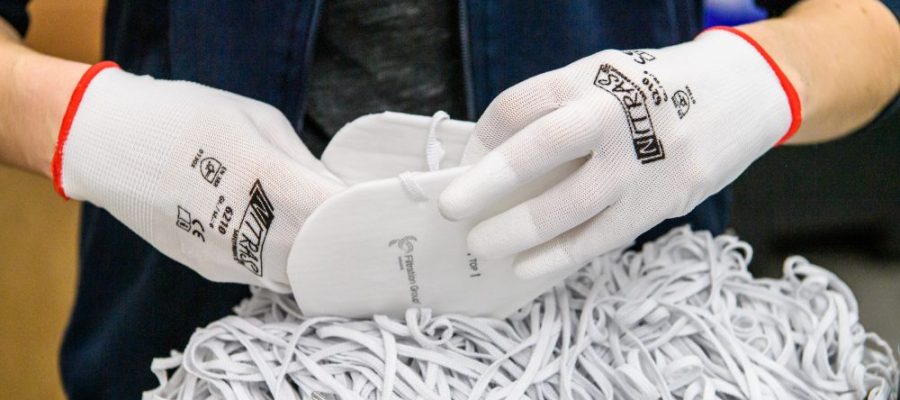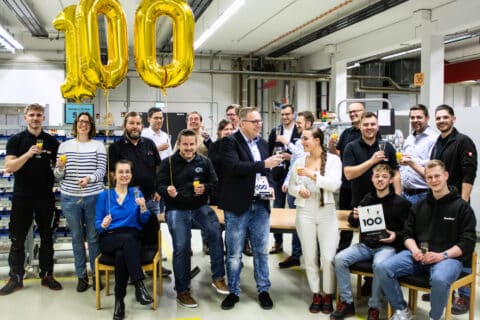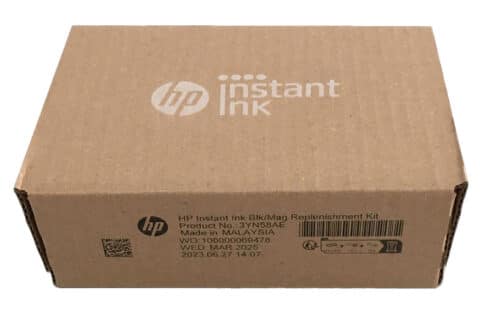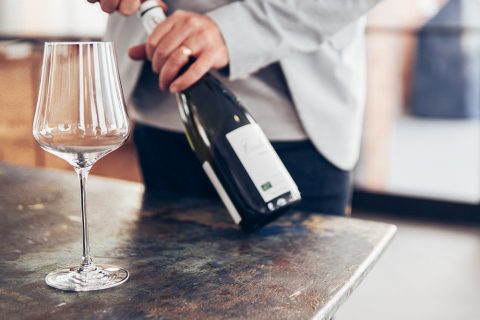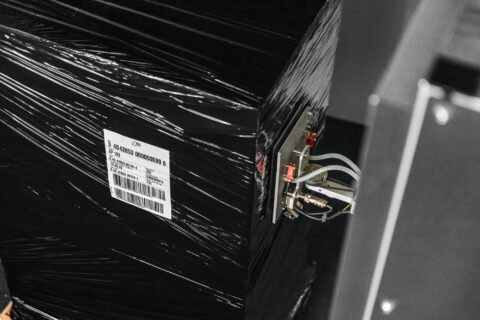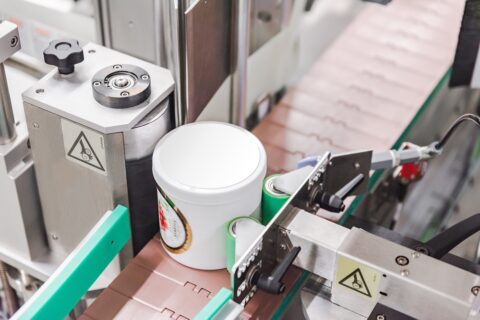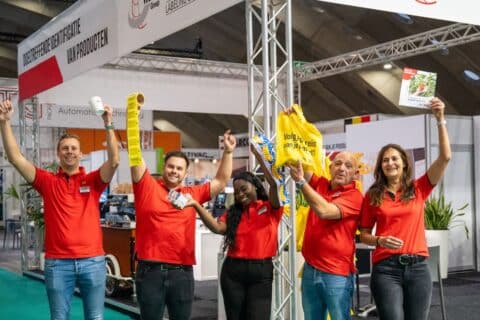Converting a production line for filter systems, to manufacture 30,000 face masks per week – in just a few days time? What may sound like a ‘mission impossible’, became a success story for our client Filtration Group in Germany. Thermal inkjet printers from our Markoprint series helped their ambitious plan to succeed. See the full story in our video:
Reliable coding for 30,000 face masks per week
Filtration Group is an expert for non-woven fabric and filter solutions. Manufacturing protective face masks was an almost obvious choice when the need for them grew dramatically due to the COVID-19 pandemic. “That is the reason we converted part of our production to making face masks, in only one week time”, says Gunnar Halden, FG Industrial President. “The printer we needed to mark the masks was provided by Weber Marking Systems, fast and without red tape. That was extremely helpful!”
Filtration Group now produces 30,000 masks per week in the south-west of Germany. Their filter medium was slightly adapted to this specific purpose and provides high-level protection from droplet infections. The FG DropSafe™ masks for personal use consist to 100% of polyester fibres. During production, rolls of non-woven fabric are placed into special machinery, emerging as masks after an automated process.
Markoprint inkjet printers – easy to integrate
A thermal-inkjet printer of the type Markoprint integra Quadro applies text, codes and logos onto the non-woven fabric before it turns into masks. The Markoprint integra Quadro controller operates up to four printheads, which can print independently or synced as a group. That means it is possible to have them print on various lines and positions or cascade them in order to create larger prints.
Filtration Group uses thermal inkjet cartridges with a maximum print width of 12.5 millimetres. “What we print covers about 35 millimetres, for which three printheads are enough,” explains Thomas Gaugler, Filtration Group Vice President Filter Elements. The three cascaded printheads are mounted at a slight offset, which enables the 37.5 millimetre print width on the non-woven fabric. The inkjet printer was installed so that the material traverses the machine horizontally, while the printheads above automatically mark the fabric at set intervals.
Certified ink for secure printing
To ensure durable marking that does not rub off, Filtration Group selected special ink that adheres perfectly to the masks’ non-woven fabric. The company uses Markoprint HP 2580 ink. This solvent-based ink is not only GMP-certified, it also complies with several US and EU regulations as well as industry guidelines, including the US FDA 21 CFR parts 170–199, Swiss Ordinance 817.023.21 and 2016 Nestlé Guidelines. “We needed to be sure that absolutely no chemical substances would leach through the masks”, says Thomas Gaugler. The ink enables razor-sharp printing results in up to 600 dpi. It is ideal for printing plain text and barcodes onto a variety of challenging materials.


All Markoprint inkjet printers work with idesign software. The proprietary Markoprint software processes data at very fast speed. The masks are printed with the Filtration Group logo and plain-text information, including the manufacturing date, a ‘Made-in-Germany’ label and instructions for use. Print layouts could also contain barcodes or two-dimensional data-matrix or QR codes. The intuitive idesign software makes it easy to create and manage various print layouts in addition to letting users start, pause and stop print jobs. It also displays operating statuses, ink levels and print data for an unlimited number of connected Markoprint systems. An ink-usage calculator helps users estimate and save consumables.
Wide range of industrial marking options
Markoprint inkjet printers are compatible with various printing technologies (HP, Xaar, Seiko, Funai, Trident) to provide an array of marking options regarding print widths and maximum resolutions. A quad printhead setup, such as used by Filtration Group, but with different cartridges, would allow for large-character coding with a maximum print width of 400 millimetres. As every ink cartridge comes with its own printhead, each new cartridge is basically a brand-new printhead. As a result, printing quality stays consistent, while cleaning and maintenance needs are low.
Thomas Gaugler is very pleased with how easy to operate and reliable the printer is. He is also impressed with how Weber Marking Systems handled the entire project: “In times of crisis like these, fast and easy help is essential. We had heard that Weber Marking Systems was finding quick, simple ways of providing companies working at their capacity limits with labelling and marking technology. We are very pleased that we asked Weber to help us. The planning, delivery, installation and instructions were all exemplary!”
How can we help you?
If you are searching for industrial labeling and coding solutions to improve your performance in production and logistics processes, we are looking forward to hearing from you! We will be happy to consult you personally and at no cost.


